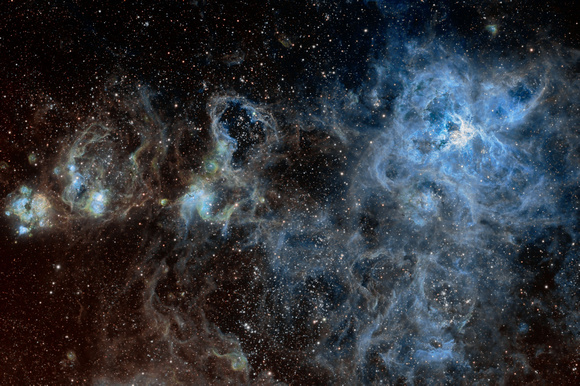NGC 20270 - Tarantula Nebula in Hubble pallette with RGB stars - 2018/2019 -
RCOS 10" - SBIG 11000m
A-P 900 GTO , Baader Planetarium 7nm to 8.5nm NB filters
SHO (72,39,& 66 x 900s exposures) =
72 hours int time including LRGB
Data courtesy of Terry Robison, taken from a remote dark site in Australia.
The Tarantula Nebula is "in" the large Magellanic Cloud, and is one of the largest emission nebulae known, iwth an apparent magnitude of 8 - nearly 100x the size of the Orion Nebula. It is so bright, that if it were as close to us as the Orion Nebula, it would cast shadows.
It is on the leading edge of the Large Magellanic Clloud, where the hydrogen gases are being compressed creating a very active star generation are - and is thought to be the most active starburst region not only in the Milky Way, but in all of the local group of galaxies, including M33.
It was interesting to read about this star forming regions, as it fits with observations that most such regions seem to reside on the leading edges of galactic dust lanes.
Terry Robison, who is originally from New Brunswick, captured the data from his remote, dark observatory somewhere in the bush in Australia. I met him on-line and he asked if I could give the image a go with the GHS script since he has struggled to show the whole dynamic range of the nebula. For this image, I used his narrowband data, employing his set of boradband RGB data only to address star colours I'd love to take full creidt for this image, but it is the underlying great data quality that makes it shine. His iother images are posted on
fllickr


